Module 5: Technology Supports
Examples of Indigenous-led Technology Solutions
A digital citizen will research with purpose and intention to find the best tools available to facilitate their students’ learning.
The following are examples of Indigenous-led technology solutions that are responsive to Indigenous Peoples.
Websites
Indigenous Languages: Maps, Apps & Websites is a web page by the Canadian Language Museum that breaks down the Indigenous language groupings in Canada. Here, you can find links to other resources that have more information about specific Indigenous languages, as well as Indigenous languages in general.
 FirstVoices is a collaborative platform designed to help Indigenous Peoples archive language information for teaching and preservation. It is an internationally recognized online platform for Indigenous communities to share and promote their languages, oral cultures, and linguistic histories. FirstVoices provides technologies, training, and technical support to community language champions.
FirstVoices is a collaborative platform designed to help Indigenous Peoples archive language information for teaching and preservation. It is an internationally recognized online platform for Indigenous communities to share and promote their languages, oral cultures, and linguistic histories. FirstVoices provides technologies, training, and technical support to community language champions.
 Native-Land.ca creates and supports conversations about colonialism, Indigenous ways of knowing, and settler–Indigenous relations. This support is offered through educational resources including our map and a territory acknowledgement guide. This is a space for Indigenous communities to self represent while setting their own terms of their representation.
Native-Land.ca creates and supports conversations about colonialism, Indigenous ways of knowing, and settler–Indigenous relations. This support is offered through educational resources including our map and a territory acknowledgement guide. This is a space for Indigenous communities to self represent while setting their own terms of their representation.
Digital maps
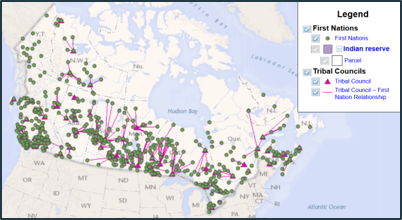 The First Nations Profiles Interactive map allows you to explore the traditional First Nations territories across Canada and provides contact information for each Nation.
The First Nations Profiles Interactive map allows you to explore the traditional First Nations territories across Canada and provides contact information for each Nation.
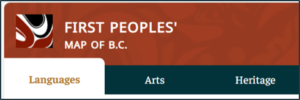
Visit the First Peoples’ Map of B.C. to access information on all the First Nations languages and communities in B.C. It will provide you with the language, art, heritage, and points of interests by Nation.
Indigenous data sovereignty
 OneFeather is planting the seeds of Indigenous data sovereignty.
OneFeather is planting the seeds of Indigenous data sovereignty.
Watch this video about OneFeather Nation Services and learn about OneFeather Mobile Technologies.
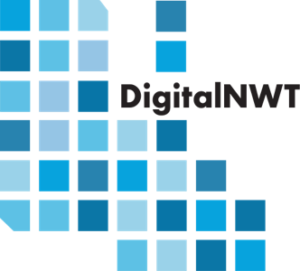 DigitalNWT supports digital literacy and Indigenous sovereignty in northern communities and has developed a series of digital literacy courses.
DigitalNWT supports digital literacy and Indigenous sovereignty in northern communities and has developed a series of digital literacy courses.
Apps
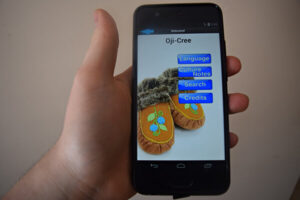 KOBE Learn is an app designed to help users learn common words and phrases in Ojibway, Cree and Oji-Cree.
KOBE Learn is an app designed to help users learn common words and phrases in Ojibway, Cree and Oji-Cree.
Find it in your app store.
Learner notes
KOBE stands for Keewaytinook Okimakanak Board of Education.
Available in Cree, Oji-Cree, and Ojibway. The KOBE Learn apps are designed to assist users in learning 500 different words and phrases from the three traditional languages, which are languages of northern communities served by KOBE.
Source and recommended readings: KOBE launches Indigenous language apps (siouxbulletin.com)
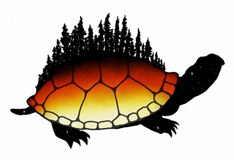 Whose Land is a land acknowledgements app. This app can tell you whose land you’re on based on exact location. Using geographic information system (GIS) technology, you can learn all about the Indigenous territory you’re on. In addition, there are videos of land acknowledgements made by people from those communities. Seen as a conversation starter, Whose Land hopes to be a tool of reconciliation.
Whose Land is a land acknowledgements app. This app can tell you whose land you’re on based on exact location. Using geographic information system (GIS) technology, you can learn all about the Indigenous territory you’re on. In addition, there are videos of land acknowledgements made by people from those communities. Seen as a conversation starter, Whose Land hopes to be a tool of reconciliation.
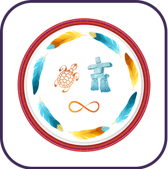 Reconciliation: A Starting Point is an educational app that makes the complexities of reconciliation easier to grasp. Although meant for public servants and made by the Canada School of Public Service, anyone can use it to learn about the distinctions between First Nations, Inuit, and Métis people. It also shows examples of the federal government’s approaches to reconciliation.
Reconciliation: A Starting Point is an educational app that makes the complexities of reconciliation easier to grasp. Although meant for public servants and made by the Canada School of Public Service, anyone can use it to learn about the distinctions between First Nations, Inuit, and Métis people. It also shows examples of the federal government’s approaches to reconciliation.
Learner notes
Music, movies, and video games
To view the world’s largest Indigenous music library, visit the Indigenous Cloud Network.
Discover the National Film Board’s rich online collection of Indigenous cinema.
Read “5 Indigenous Video Games You Should Be Playing” on A Tribe Called Geek.
Read this news article: Indigenous sisters developing video games to revitalize Mohawk language.
Social media
Watch this video: My Haida Language Story in 60 Seconds.
Learner notes
Digital archives

View a digital archive of Plateau cultural materials at the Plateau Peoples’ Web Portal.
VR, AR, and AI

The Indigenous Protocol and Artificial Intelligence Working Group develops new conceptual and practical approaches to building the next generation of A.I. systems. The group asks questions like, “From an Indigenous perspective, what should our relationship with A.I. be?”
To learn more about their work, visit Indigenous AI.
Digital radio and television
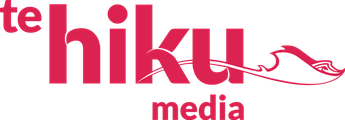 Te Hiku Media is a charitable organization whose core focuses include Māori language revitalization, as well as archiving and training.
Te Hiku Media is a charitable organization whose core focuses include Māori language revitalization, as well as archiving and training.
Education
The Digital Literacy Hub project by the Aboriginal Literacy Foundation aims to bring to one interactive, digital platform a range of assets, networks, libraries, schooling resources, tools, and portals that will make the educational experience of our Indigenous students and their families a much easier and more interactive one.

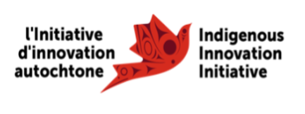 The Indigenous Innovation Initiative aims to empower and build capacity of First Nations, Inuit, and Métis innovators and Indigenous communities to identify, lead and resolve their own issues and shepherd inclusive social change through innovation.
The Indigenous Innovation Initiative aims to empower and build capacity of First Nations, Inuit, and Métis innovators and Indigenous communities to identify, lead and resolve their own issues and shepherd inclusive social change through innovation.
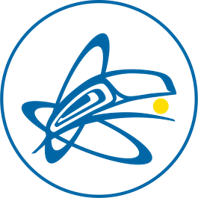 The First Nations Technology Council is an Indigenous-led non-profit that serves all Indigenous Peoples in B.C. Their mandate is to provide digital skills training to Indigenous learners, support digital equity, and ensure Indigenous Peoples are actively leading and shaping the technology sector.
The First Nations Technology Council is an Indigenous-led non-profit that serves all Indigenous Peoples in B.C. Their mandate is to provide digital skills training to Indigenous learners, support digital equity, and ensure Indigenous Peoples are actively leading and shaping the technology sector.
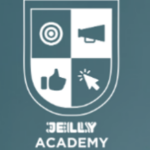 Jelly Academy aims to give their students the skills, experience and knowledge to be at the cutting edge of industry, ensuring they’re equipped with in-demand skills. Founder Darian Kovacs had two goals: to make education more accessible and attainable to the underrepresented in the digital industry and to equip talent pool with the digital skills to succeed in the digital age.
Jelly Academy aims to give their students the skills, experience and knowledge to be at the cutting edge of industry, ensuring they’re equipped with in-demand skills. Founder Darian Kovacs had two goals: to make education more accessible and attainable to the underrepresented in the digital industry and to equip talent pool with the digital skills to succeed in the digital age.
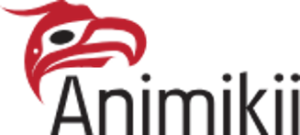 Animikii offers website and software development.
Animikii offers website and software development.
Animikii implements technology in a culturally informed and respectful way through collaboration with their clients. Their goal is to empower communities and increase access to technology.
Storytelling

Terrastories is an Indigenous led-platform designed to record and capture oral history through storytelling from Indigenous Peoples. It is a geographical based storytelling application developed to enable Indigenous communities to locate, discover and map their own oral storytelling.
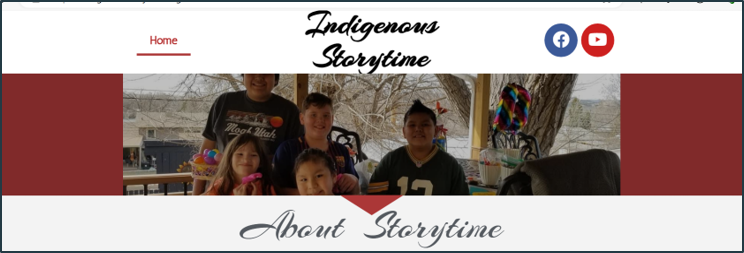
Indigenous Storytime is digital storytelling that honours oral traditions. Teachers and storytellers from all across Turtle Island are invited to contribute.
Attributions
- “FirstVoices logo” is used under fair dealing.
- “Native-Land.ca logo” is used under fair dealing.
- “First Nation Profiles Interactive map” is used under fair dealing.
- “First Peoples’ Map of B.C. logo” is used under fair dealing.
- “OneFeather logo” is used under fair dealing.
- “DigitalNWT logo” is used under fair dealing.
- “A view of the KOBE Learn Oji-Cree main menu on the app” by Jesse Bonello is used under fair dealing.
- “Whose Land logo” is used under fair dealing.
- “Reconciliation: A Starting Point logo” is used under fair dealing.
- “Coeur d’Alene Banner” from the Plateau Peoples’ Web Portal is used under fair dealing.
- “Indigenous AI image” is used under fair dealing.
- “Te Hiku Media logo” is used under fair dealing.
- “Digital Literacy Hub banner” is used under fair dealing.
- “Indigenous Innovation Initiative logo” is used under fair dealing.
- “First Nations Technology Council logo” is used under fair dealing.
- “Jelly Academy logo” is used under fair dealing.
- “Animikii logo” is used under fair dealing.
- “Terrastories logo” is used under fair dealing.
- “Indigenous Storytime banner” is used under fair dealing.

